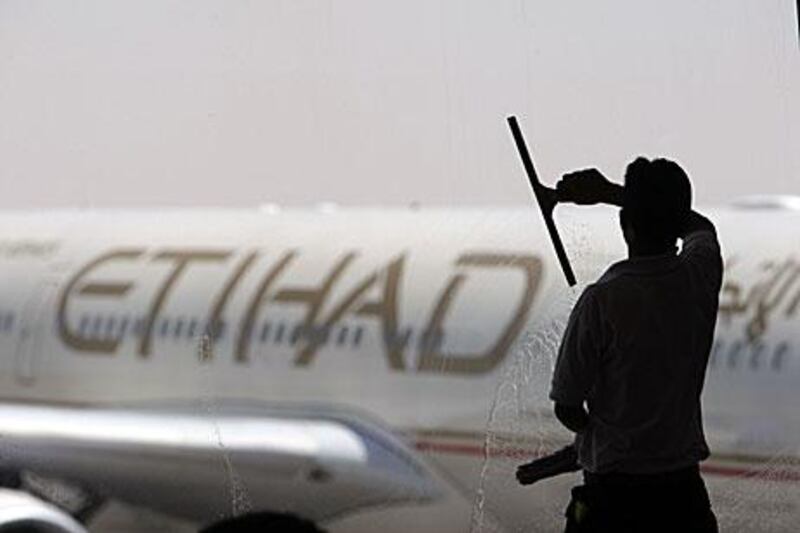LONDON // Etihad Airways is on track to report profitable earnings before its aircraft costs are taken into account for the first time this year.
This is a significant step in the airline's goal to achieve full break-even next year, its chief executive James Hogan said yesterday.
The airline will post profitable earnings before interest, taxation, depreciation, amortisation and rentals (Ebitdar), Mr Hogan said.
"With only a month to go, we are well on track for profitable Ebitdar for 2010, marking an important milestone in the commercial development of the airline," he said.
"Our next goal is full break-even in 2011, leading to sustainable profitability from 2012 onwards. All our indicators show that these targets are in our sights."
Mr Hogan made the announcement at a roadshow in London, at which more than 170 bankers and other members of the financial community were present.
The event was the latest in a series of global meetings with finance professionals as the airline looks to raise funding to help pay for its pipeline of 106 aircraft over the next decade.
Ebitdar is an important gauge used by carriers and recognised by investors to show the financial performance of airlines.
"It looks at the operational performance," said James Rigney, the chief financial officer of Etihad. "It removes the aircraft ownership cost, which is interest on aircraft loans and depreciation of those aircraft."
Etihad's financial performance has rebounded strongly after the global financial crisis. Its original target of achieving a full break-even this year was scuppered by the downturn.
At the heart of the improvement in its performance this year has been a rise in its passenger yield. Its yield per revenue passenger kilometre (RPK), or how much money the airline makes for carrying each passenger 1km, has risen to 27 fils this year and it hopes to raise that to 29 fils next year. In 2008, its RPK reached 30 fils.
Etihad used the roadshow to present its business strategy for the future and provide an update on its commercial performance since it was established seven years ago.
A major part of the financing for the airline's fleet is raised through commercial markets.
About 14 per cent of Etihad's aircraft financing will have been supplied by export credit guarantees by the end of the year.
Such financing has been a major source of contention, with some European carriers lobbying their governments to put an end to export credit rules that benefit Middle East airlines. They cite the competitive threat posed by the likes of Etihad, Emirates Airline and Qatar Airways.
Etihad and Emirates were two of 10 airlines with aircraft orders worth a total of US$119 billion (Dh437.08bn) yesterday calling for an overhaul of export credit rules for aviation.
They want to see a scrapping of the home country rule that prevents US carriers and those in certain European countries that make aircraft from accessing export credit support.
"This is reminding governments the role we play in supporting those production lines and employment in Europe and America through Airbus and Boeing," said Mr Hogan.





